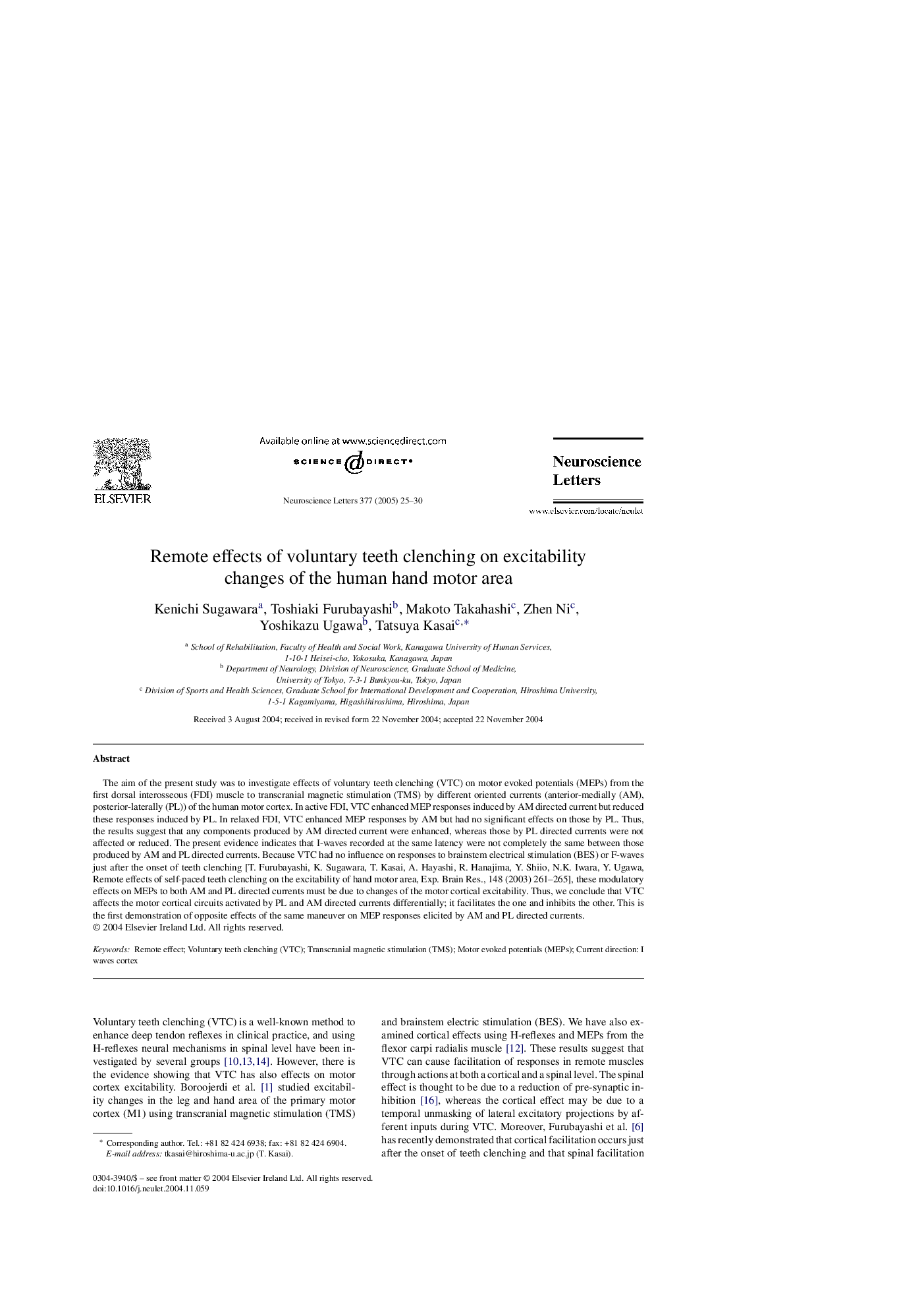| Article ID | Journal | Published Year | Pages | File Type |
|---|---|---|---|---|
| 9429376 | Neuroscience Letters | 2005 | 6 Pages |
Abstract
The aim of the present study was to investigate effects of voluntary teeth clenching (VTC) on motor evoked potentials (MEPs) from the first dorsal interosseous (FDI) muscle to transcranial magnetic stimulation (TMS) by different oriented currents (anterior-medially (AM), posterior-laterally (PL)) of the human motor cortex. In active FDI, VTC enhanced MEP responses induced by AM directed current but reduced these responses induced by PL. In relaxed FDI, VTC enhanced MEP responses by AM but had no significant effects on those by PL. Thus, the results suggest that any components produced by AM directed current were enhanced, whereas those by PL directed currents were not affected or reduced. The present evidence indicates that I-waves recorded at the same latency were not completely the same between those produced by AM and PL directed currents. Because VTC had no influence on responses to brainstem electrical stimulation (BES) or F-waves just after the onset of teeth clenching [T. Furubayashi, K. Sugawara, T. Kasai, A. Hayashi, R. Hanajima, Y. Shiio, N.K. Iwara, Y. Ugawa, Remote effects of self-paced teeth clenching on the excitability of hand motor area, Exp. Brain Res., 148 (2003) 261-265], these modulatory effects on MEPs to both AM and PL directed currents must be due to changes of the motor cortical excitability. Thus, we conclude that VTC affects the motor cortical circuits activated by PL and AM directed currents differentially; it facilitates the one and inhibits the other. This is the first demonstration of opposite effects of the same maneuver on MEP responses elicited by AM and PL directed currents.
Related Topics
Life Sciences
Neuroscience
Neuroscience (General)
Authors
Kenichi Sugawara, Toshiaki Furubayashi, Makoto Takahashi, Zhen Ni, Yoshikazu Ugawa, Tatsuya Kasai,
